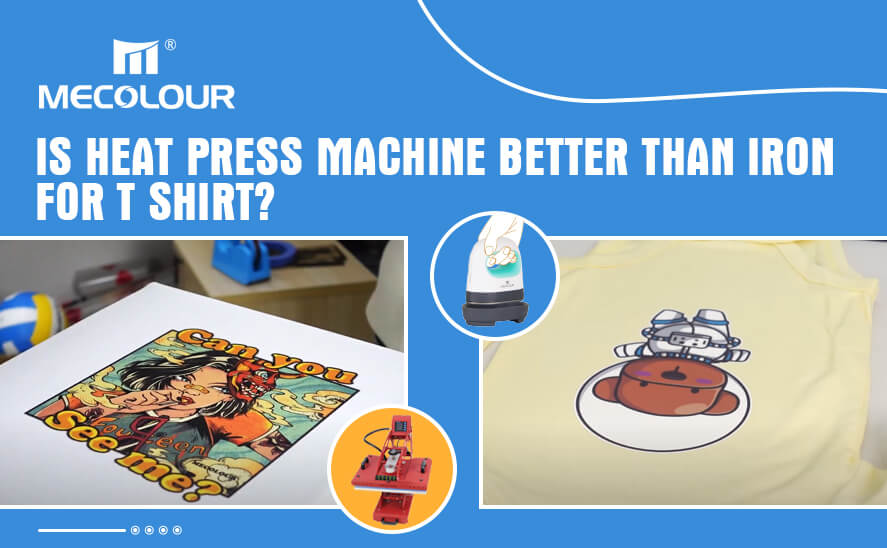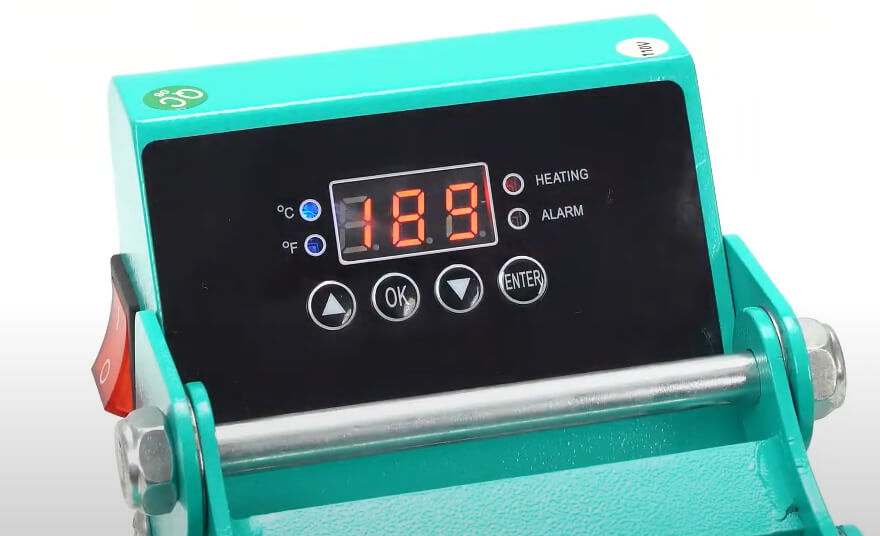Is heat press machine better than iron for t shirt?

When it comes to applying heat transfers to T-shirts, a heat press machine is generally considered to be a better option than using an iron. While using an iron can be a more accessible and affordable choice. Both a heat press machine and an iron can be used to apply designs or transfer images onto a T-shirt, but they have some differences in terms of performance and convenience.
Here are some factors to consider:
Temperature and Pressure Control: Heat press machines provide precise temperature and pressure control, allowing for consistent and even heat distribution across the entire transfer. This ensures that the design adheres properly to the fabric and results in a long-lasting and vibrant print. Irons, on the other hand, may have uneven heat distribution and lack the ability to maintain a consistent temperature and pressure, which can lead to less durable and less professional-looking results.

Temperature and Pressure Control
Time Efficiency: Heat press machines are designed to heat up quickly and provide efficient heat transfer application. They have larger heating elements and larger pressing surfaces, allowing for the simultaneous application of heat to a larger area, such as the front or back of a T-shirt. This saves time compared to using an iron, which requires manual movement across the transfer area and may require multiple passes to ensure proper heat application.
Versatility: Heat press machines offer versatility in terms of the types of heat transfers they can accommodate. They can handle a wide range of materials, including heat transfer vinyl, sublimation, and screen-printed transfers. Some heat press machines also have interchangeable platens, allowing for the application of transfers on various garment sizes and styles. Irons, on the other hand, may have limitations in terms of the types of transfers they can effectively apply and the size of the garment they can accommodate.
Consistency and Durability: Heat press machines provide consistent heat and pressure, ensuring that the transfer adheres uniformly to the fabric. This consistency contributes to the durability of the print, as it helps to prevent peeling or fading over time. Irons may not provide the same level of consistency, which can result in less durable prints that may not withstand regular washing and wear as well.
Ease of Use: Heat press machines require some initial setup and learning curve, but once you become familiar with the process, they are generally straightforward to use. They often have digital controls and timers, simplifying the transfer process. Irons are more commonly available in households and are easier to use for small-scale or occasional transfers, but they may require more manual effort and attention to achieve satisfactory results.
It’s important to note that while a heat press machine offers these advantages, it may come at a higher cost compared to using an iron. However, if you are looking for professional-quality results, especially for larger volume production or commercial purposes, investing in a heat press machine is generally considered a worthwhile investment.
Ultimately, the choice between a heat press machine and an iron depends on your specific needs, budget, and the level of quality you desire for your T-shirt prints.
If you are engaged in the digital transfer industry, whether wholesale Mini irons or heat press machines, Mecolour provides you with the best products, feel free to contact us for more information.
Related:
Is heat press machine good for t-shirts?
What is the difference between heat press and iron?
Is the Mini iron heat press worth it?

















